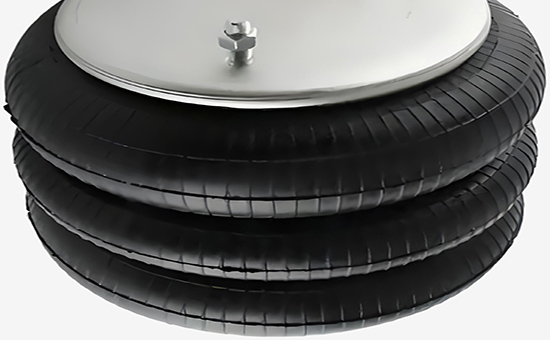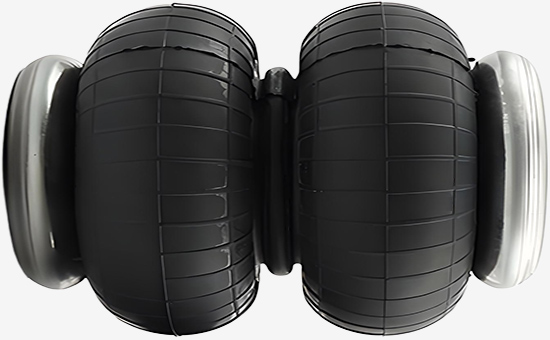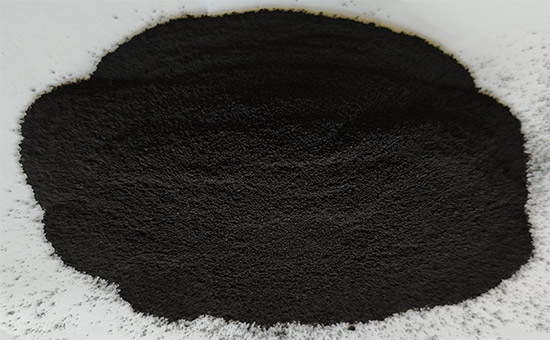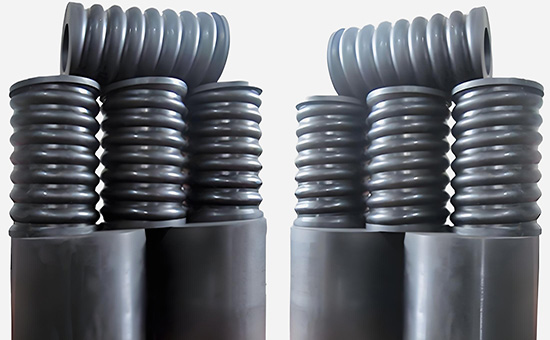
Rubber air spring is an elastic element that uses compressed air as the elastic medium and uses the expansion and contraction of the rubber capsule to achieve the function of cushioning and shock absorption, mainly including the inner layer of rubber, the outer layer of rubber and the cord layer of rubber. Rubber powder is a powdery material processed from waste rubber products through crushing, grinding, screening and other processes, which has the elasticity, wear resistance and chemical corrosion resistance of rubber, and can effectively reduce the cost of raw materials for the processing of each rubber layer of rubber gas springs.
1. Rubber air spring outer rubber performance requirements and vulcanization formula
The outer rubber of rubber air springs needs to have good weather resistance, high wear resistance and tensile stress, and certain tear resistance to ensure that it will not tear easily when pulled by external force; Good adhesion with cord.

50 parts of natural rubber, 50 parts of neoprene, 10 parts of fine rubber powder, 5 parts of zinc oxide, 3 parts of magnesium oxide, 1 part of stearic acid, 2 parts of antioxidant 4010NA, 1 part of paraffin, 15 parts of super wear-resistant carbon black, 15 parts of semi-reinforcing carbon black, 1 part of pine tar, 2.5 parts of black ointment, 0.5 parts of accelerator M, 1.5 parts of sulfur; Total 157.5 copies.
100 parts of natural rubber, 10 parts of fine rubber powder, 5 parts of zinc oxide, 4 parts of stearic acid, 2 parts of antioxidant 4010NA, 40 parts of super wear-resistant carbon black, 10 parts of semi-reinforcing carbon black, 3 parts of pine tar, 0.5 parts of accelerator M, 0.5 parts of accelerator DM, 3 parts of sulfur; A total of 178 copies.
2. Rubber gas spring inner rubber performance requirements and vulcanization formula
The inner layer of rubber air spring rubber is required to have excellent air tightness performance, good flexibility, good compatibility with the air inside the airbag and other media that may be in contact, and good adhesion to the cord glue.

100 parts of natural rubber, 10 parts of fine rubber powder, 10 parts of zinc oxide, 2 parts of stearic acid, 1.5 parts of antioxidant 4010NA, 40 parts of semi-reinforcing carbon black, 1 part of pine tar, 0.5 parts of accelerator M, 0.05 parts of accelerator TMTD, 2.55 parts of sulfur; Total 167.6 copies.
3. Rubber air spring cord adhesive layer rubber performance requirements and vulcanization formula
The rubber air spring cord layer (middle reinforcing layer) is composed of fiber fabric (such as cord, etc.) and rubber, which can enhance the strength and bearing capacity of the airbag, and needs to have good adhesive properties, high tensile strength, modulus, heat resistance and flexural resistance.
100 parts of natural rubber, 10 parts of fine rubber powder, 25 parts of zinc oxide, 2 parts of stearic acid, 1.5 parts of antioxidant 4010NA, 15 parts of semi-reinforcing carbon black, 1.5 parts of pine tar, 0.05 parts of accelerator TMTD, 2.55 parts of sulfur; Total 157.6 copies.

When using rubber powder in each rubber layer of rubber air spring to reduce costs, it is necessary to ensure that the rubber powder is evenly dispersed in the rubber. Generally, the rubber powder with smaller particle size can be better dispersed in the rubber matrix, and the rubber powder with higher activity can react better with rubber E4LYY1125; Adding an appropriate amount of plasticizer can improve the processing performance of the rubber compound and promote the uniform dispersion of the rubber powder. In the future, Xiaobian will continue to share with you the types, filling ratios and formula design of rubber powder for each adhesive layer of rubber air springs.
Exclusive original article [commercial authorization] reprint, excerpt and excerpt in any form are prohibited without written authorization. Focus on Hongyun rubber: learn the process formula and raw material technology of producing rubber products from recycled rubber to help you reduce costs and increase profits